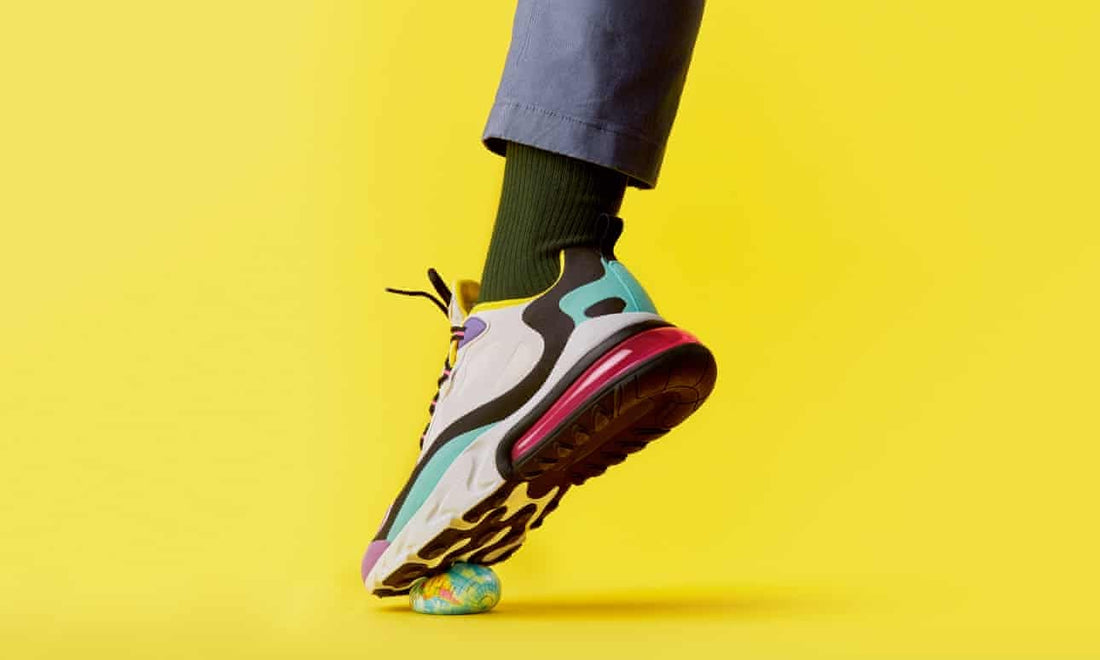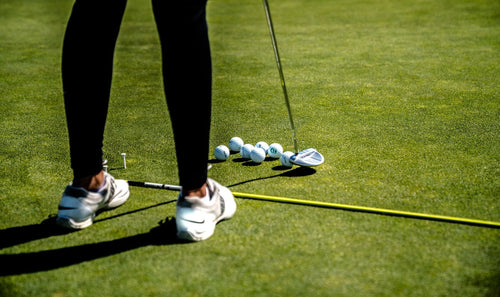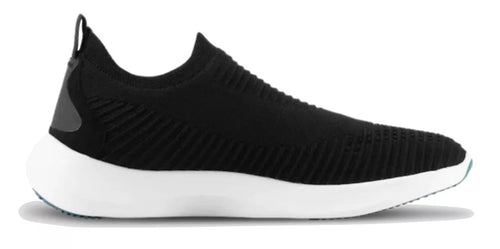Did you know: the US Department of the Interior estimates that roughly 300 million pairs of old shoes end up in the landfill each year? That’s an astonishing number, especially considering that most of the materials used in shoes can last for up to 1000 years.

Imagine: all those precious heels and athletic waterproof footwear just rotting and burning away.
Recently, sustainable movements in the fashion industry have made efforts to reduce waste production and promote ecological integrity. And this extends to the global footwear industry as well.
Suddenly, being green is in fashion.
For example, big-name brands such as Nike, Adidas, and NewBalance have adopted sustainable practices. This includes collecting, redistributing, and recycling old shoes, as well as recycling other plastic waste to make new shoes.

But the thing is, you can also take the initiative and recycle your old footwear yourself. So, put on your helmet because we’re about to take a crash course on recycling footwear.
Let’s get started.
Why You Shouldn’t Throw Away Old Shoes
Here’s another fact: the US Agency for International Development estimates that the number of children around the world who have never owned a pair of shoes equals 300 million.

But wait. That sounds familiar, doesn’t it?
If it hasn’t clicked for you yet, that’s the same as the number of shoes that are abandoned to landfills each year. Coincidence? Or just a very telling clue?
The fact is, there is absolutely no reason why you shouldn’t repurpose, recycle, or donate your old shoes. Not only does it reduce your own carbon footprint, but it also helps you prevent unfair labor practices throughout the world.
Another concerning fact lies in the social phenomenon of ascribing cultural value to shoes. This ever-changing benchmark makes most footwear dispensable in the First World and priceless in the Third World.
Do you really want to contribute to this disparity? If your answer is no, then stop throwing away old footwear and needlessly buying new shoes.
What Are Your Shoes Made Of?
You don’t have to be a cobbler to know what your shoes are made of- you just have to be an Eco-enthusiast.
The thing is, most modern footwear is made from non-eco-friendly materials, including a lot of synthetic plastic.
Anatomy of Athletic Waterproof Footwear
For a better understanding of shoe recycling, let’s take a brief look at the Anatomy of Athletic Waterproof Footwear:

- The shoe upper is typically made from some fabric or leather. For athletic waterproof footwear, the shoes are usually made from some kind of breathable mesh fabric. Most of these fabrics are recyclable.
- The midsole of an athletic shoe is usually made from ethyl vinyl acetate (EVA) and polyurethane. These materials can last for up to a thousand years in landfills.
- The outsole is made from carbon rubber, blown rubber, or a combination of both. The altered rubber can last for up to 80 years. Upon burning, they release poisonous gases into the atmosphere.
As you can see, a lot of these materials take much too long to decompose.
Additionally, the construction of these shoes is extremely wasteful.
Traditionally, and typically still, small components of the shoe are cut from large sheets, which are then sewn together. This type of shoe construction leaves over 30% of the materials to be discarded.
These types of shoes can be difficult to recycle on your own. What you can do, instead, is repurpose and upcycle them to give them new life. Otherwise, chuck them in the recycling bin and let the professionals handle the rest.
But knit waterproof footwear is a whole other story.
Knit Waterproof Footwear Is Innately Eco-Friendly
Knit shoes have swiftly risen in popularity over the past few years. This novel footwear archetype is adored for its comfort, versatility, and, of course, sustainability.

These days, most athletic waterproof footwear, such as Loom Shoes, uses Eco-friendly manufacturing practices.
Whereas most shoe-manufacturing processes produce incessant waste, knit shoes actually reduce the production of waste materials by up to 80%. This is thanks to the fact that knit footwear uses a seamless, one-piece upper that has been knit instead of sewn.
Additionally, the material itself is very versatile and easily recyclable. You can easily repurpose the woven polymer, especially since you won’t be disassembling a hundred different parts.
Now that you know how footwear and sustainability are interlinked, let’s change gears and talk more about the ways to recycle old shoes.
Giving Old Shoes New Life
We’ve already talked about a few ways in which you can recycle or repurpose your old shoes. So, let’s get into the details.

Here, we’ll consider ways to recycle, upscale, or repurposing old waterproof footwear.
Donate Them to A Charity
Many charities across the US accept old shoes as donations:
- Soles 4 Souls. If you have a pair of relatively new shoes that you don’t see yourself wearing anymore, drop them off at one of the thousands of Soles 4 Souls locations across the country. These shoes help create job opportunities for entrepreneurs in developing countries.
- Dress for Success. Much like Soles 4 Souls, Dress for Success provides dressing for women in need to help them secure jobs.
- Pick Up Please: Help out America’s Veterans and their families by donating your preloved shoes.
- Share Your Soles. Whether it’s athletic shoes, sandals, or formal shoes, Share Your Soles wants you to donate your shoes to those who need them the most.
Keep in mind that it’s very disrespectful to bring completely unusable shoes to charities. So, make sure that your shoes are in wearable condition.
Nike Reuse-A-Shoe
If your shoes don’t have a single mile left in them, you probably can’t donate or repurpose them.

But you don’t have to throw them away either.
Nike’s Reuse-A-Shoe program takes old athletic footwear and recycles them to later use as other athletic equipment.
All you have to do is visit your nearest Nike store and drop off your shoes. It doesn’t exclusively have to be Nike shoes, either. Instead, they accept all brands of athletic footwear.
No matter how battered, torn, or faded, Nike will give your shoes a new life.
Revamp Your Garden
You can easily repurpose old, faded shoes to accessorize your garden.
- Make shoe planters. Waterproof footwear is typically very breathable. For this reason, they’re perfect for alternative and whimsical planter designs. Cacti and succulents will thrive the most inside your old shoes.
- Stepping stones. If you have multiple old shoes, you can use them to make stepping stones for your gardens. Just turn them upside down and ground them in the earth. This way, your old shoes will protect your new ones from wear and tear.
- Shoe Birdhouse. Birds don’t know the difference between expensive wood and old shoes, nor do they care. So, set up a make-shift birdhouse by nailing the sole along the side of the tree. You can fill it up with birdseed or leave it empty for them to take up residence.
Recycle Old Shoelaces
If you’re into arts and crafts, your mind must be brimming with creative ideas to repurpose old shoelaces.

- You can use the shoelace to keep your locks away from your face. Try fashioning a new headband or decorating plastic headbands with old shoelaces.
- Wrapping Ribbon. Shoelaces can double as ribbons for gift wrapping. The aglets make it really easy to wrap a bow.
- Use in your garden. You can use the shoelaces to secure your climbing vegetables.
- Braided Jewellery. This might take a little practice, but it’s nothing you can’t learn from a few hours on the internet.
Honestly, the list is endless. But for now, let your creativity take over and indulge in a little arts and crafts with old shoelaces.
Just remember to wash them first!
Upcycle Them
For some reason, people tend to severely underestimate the lifespan of their shoes. So, before you throw in the towel, consider this: maybe all your shoes need is a little bit of TLC and a whole lot of makeovers.
- Apart from athletic shoes, most shoes can be repaired. If a heel is broken or the soles are coming off, just take them to a repair shop.
- You can easily paint over old shoes to give them a completely new look. Experiment with glitter and vibrant colors on your old stilettos, or give a graffiti-inspired makeover to your sneakers.
- Decorate over the frayed seams with some creative ornaments. With a steady enough hand, you can cover up those loose stitches easily.
Conclusion
Once you start thinking about it, there really is no justifiable reason that you should throw your old shoes away.
The thing is, there are so many alternative ways that you can recycle your old shoes. The most obvious thing to do is to donate to a local charity. But sometimes, your shoes are just too worn out.
Even in that case, hope is not lost.
As we saw, you can repurpose and upcycle your shoes in so many creative ways. Otherwise, keep an eye out for footwear brands that accept and recycle preloved athletic waterproof footwear.
Sure, we still have a long way to go until we can lead sustainable, eco-conscious lives. But we won’t get there until we actually start- one shoe at a time.


























